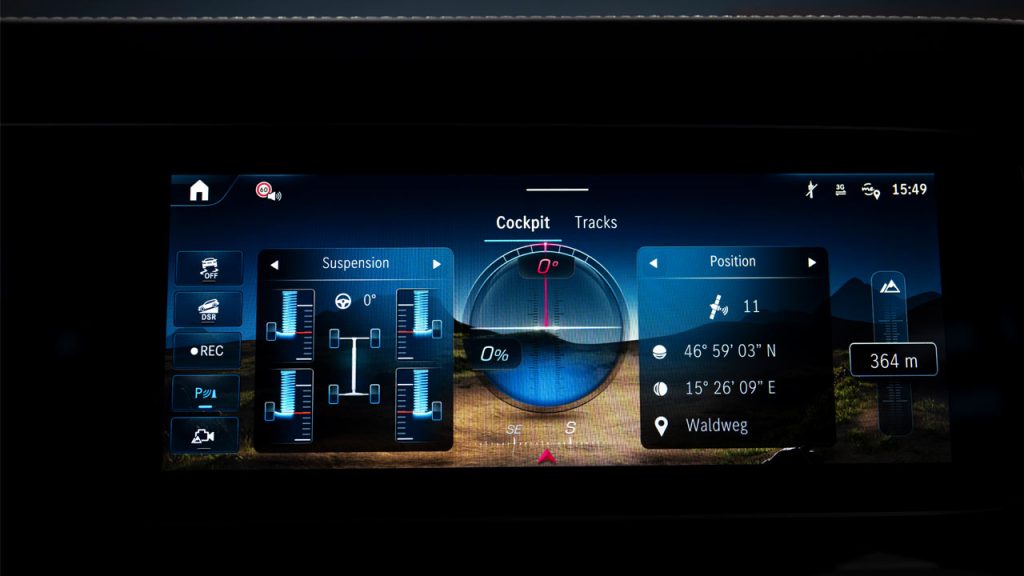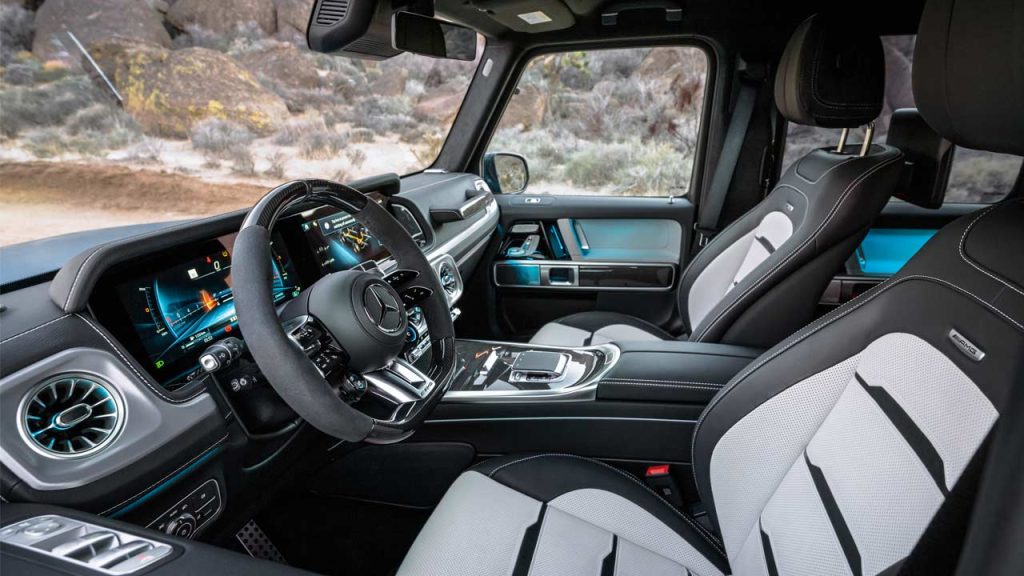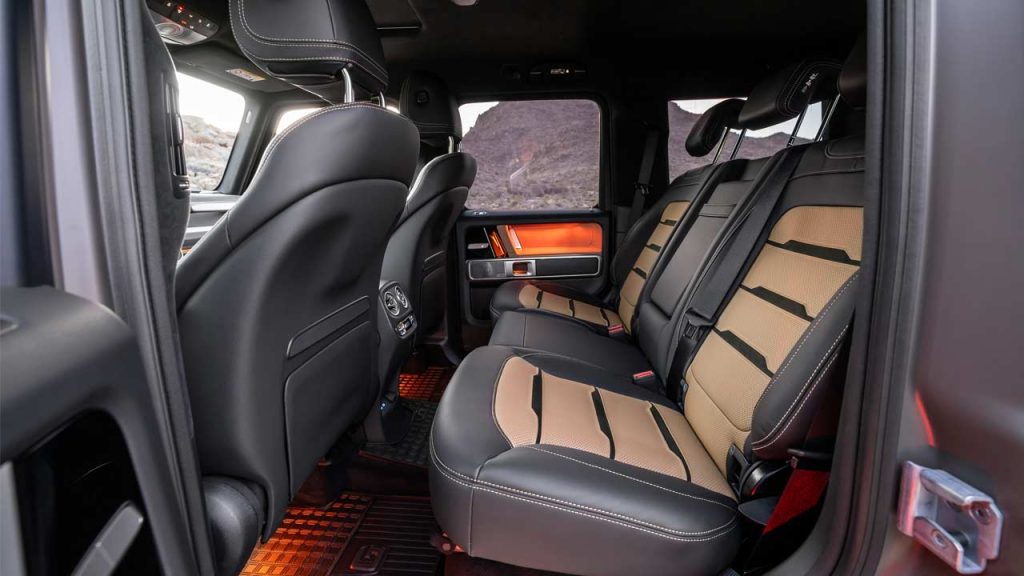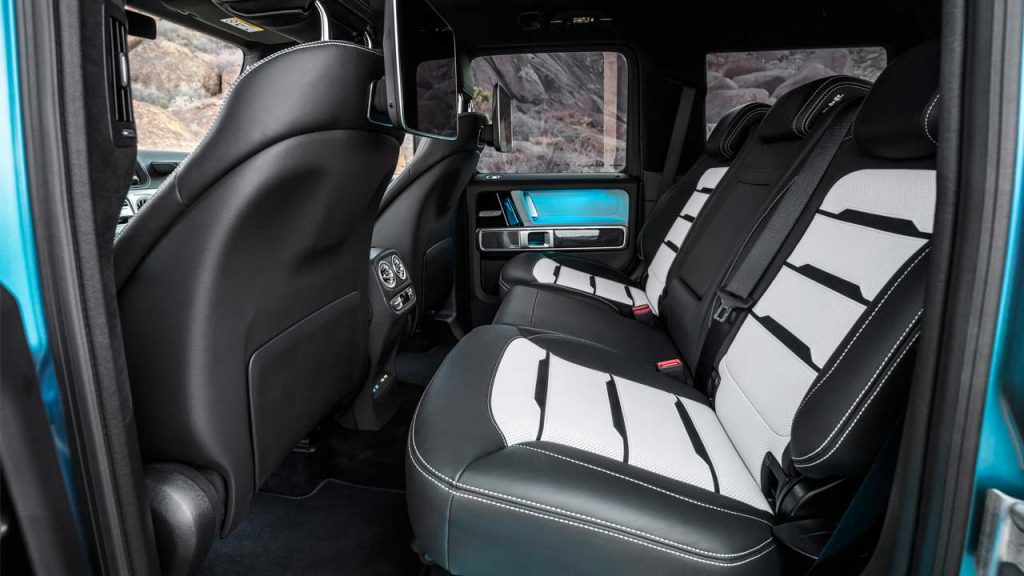The second-gen Mercedes-Benz G-Class has received its mid-cycle refresh, with prices in Germany starting at €122,808 (including VAT). At present, there are three variants to choose from:
| Variant | Price (including VAT) |
| G 450 d | €122,808 |
| G 500 | €132,328 |
| G 63 | €189,329 |
So, what’s new? It looks exactly the same, right? Well, the non-AMG models feature a new grille where there are four horizontal louvres as opposed to the previous three. There are subtly redesigned bumpers as well, but again, unless you put the new one and the old one side-by-side, you wouldn’t see any differences. Also, the reversing camera has been moved to the centre of the bumper—above the license plate holder, and a washer nozzle is fitted to the side of the reversing camera in case it gets dirty; it doesn’t have its own control but is hooked-up with the rear window washer system.
The new models come standard with aerodynamically optimized 18-inch alloy wheels in a 5-twin-spoke design and LED high-performance headlights. There are different wheel designs available with sizes ranging from 18- to 20-inches. Sodalite blue metallic exterior paint option is also now available.
There are multiple optional packages for those who wish to spend more money. But anyway, the new G-Class comes with adaptive adjustable damping as standard, which was optional before. And, three additional off-road drive modes are available: Trail, Rock and Sand, which are fairly self-explanatory. For those scratching their heads, the Trail mode is claimed to offer optimized handling on gentler terrain with loose surfaces – for example on dirt roads or gravel.
There’s also something called Offroad Cockpit—which offers off-road-related data in the display, such as artificial horizon, positioning, compass, altitude, steering angle of the front axle, torque, power, tyre pressure and temperature as well as the status of the differential locks. The “transparent bonnet” function is also available, which enables a virtual view under the front of the vehicle.
Inside, the dashboard and centre console have been refreshed, but you really need to put the new and old ones side-by-side to see any differences. That said, there’s the latest-generation multifunction steering wheel with touch-control surfaces. For the first time, all variants get the latest version of the MBUX system (two 12.3-inch displays). Optional extras include a Rear Seat Entertainment system (two 11.6-inch touch displays) and a Burmester 3D surround sound system.
Moving on to the juicy bits of the story, the G 450 d is powered by a 3.0L straight-six turbo diesel engine that offers 270 kW (367 metric hp) at 4,000 rpm and 750 Nm (553 lb-ft) of torque between 1,350 and 2,800 rpm. The official 0-100 km/h (62 mph) sprint time is 5.8 seconds and the top speed is 210 km/h (130 mph).
The G 500 is a petrol variant, packing a 3.0L straight-six turbocharged unit, offering 330 kW (449 metric hp) at 6,100 rpm and 560 Nm (413 lb-ft) of torque between 1,950 and 5,500 rpm. The official 0-100 km/h (62 mph) sprint time in this case is 5.4 seconds, while the top speed is the same 210 km/h (130 mph).
The G 63 continues to pack a 4.0L V8 biturbo petrol engine that offers 430 kW (585 metric hp) at 6,000 rpm and 850 Nm (627 lb-ft) of torque between 2,500 and 3,500 rpm. The official 0-100 km/h (62 mph) sprint time is 4.3 seconds and the top speed is 220 km/h (137 mph).
All three engines are coupled with a 48-volt mild-hybrid system that offers 15 kW (20 metric hp) and 200 Nm (147 lb-ft) temporary boost.
The G 63 can be optioned with AMG Active Ride Control suspension with active, hydraulic roll stabilisation and adaptive adjustable damping. Active hydraulic elements replace the conventional mechanical torsion-bar transverse stabilisers. The adaptive shock absorbers are equipped with two hydraulic connections – one each on the compression and rebound stages of the damper.

Leave a Reply
Note: Comments that are unrelated to the post above get automatically filtered into the trash bin.





















































